Step 3: Choose how you want to unlock your drive during startup: Use a password to unlock the drive or use my smart card to unlock the drive. For the purpose of this guide, select Use a password to unlock the drive checkbox and enter a password that you will use to unlock the drive. Click Next to continue.

Step 4: You will be given four choices to save a recovery key to regain access to your files in case you forget your password. We are recommending select Save to your Microsoft account option. Click Next.

Tip: If you have selected to store your recovery key at Microsoft account then you can retrieve the encryption key at this location: https://onedrive.live.com/recoverykey.
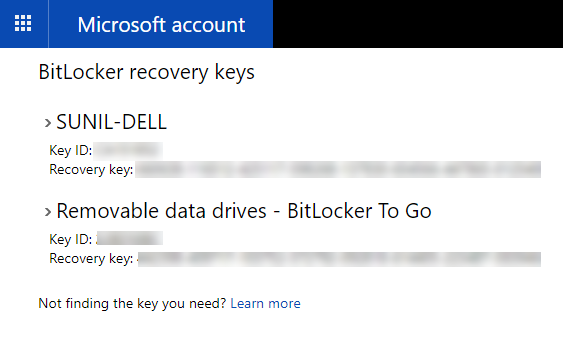
Step 5: Choose the encryption option as Encrypt used disk space only (faster and best for new PCs and drives). Click Next.
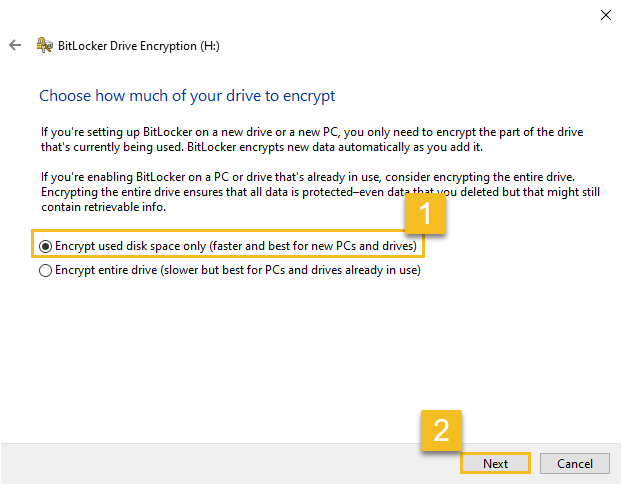
Step 6: On Windows 10 (v. 1511), Microsoft introduced support for XTS-AES encryption algorithm. It promises better encryption with 128-bit and 256-bit XTS AES keys. Select New encryption mode (best for fixed drives on this device). Click Next.

Step 7: Click Start encrypting to being the process. Just leave Windows to do its thing, and in a few hours you will have a BitLocker encrypted drive. The length of time it takes BitLocker to fully encrypt your files depends on the size of your drive, or how much data you are encrypting.
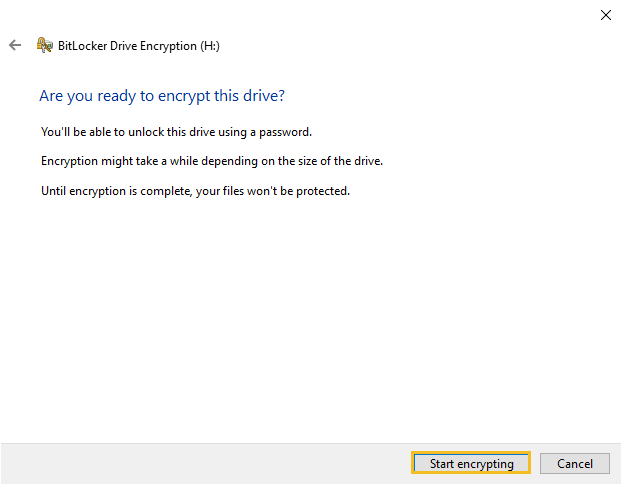
Once the encryption process completes, the drive level should read as BitLocker on.
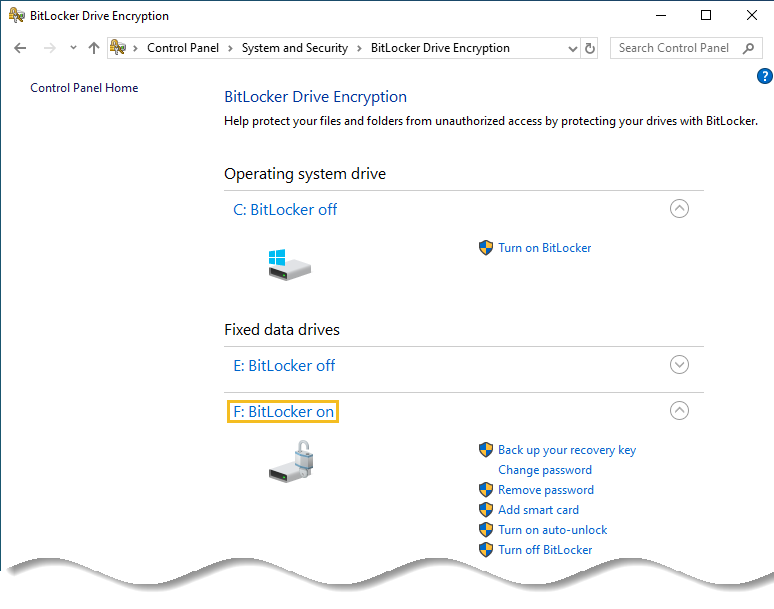
In File Explorer, encrypted drives show a gold lock whereas it changes to gray and appears unlocked when you unlock the drive.

How to turn on BitLocker To Go
To turn on BitLocker To Go on a USB flash drive or external hard drive, do the following:
Step 1: Connect your USB flash drive or external hard drive to your Windows 10 PC.
Step 2: Open Control Panel >> System and Security >> BitLocker Drive Encryption.
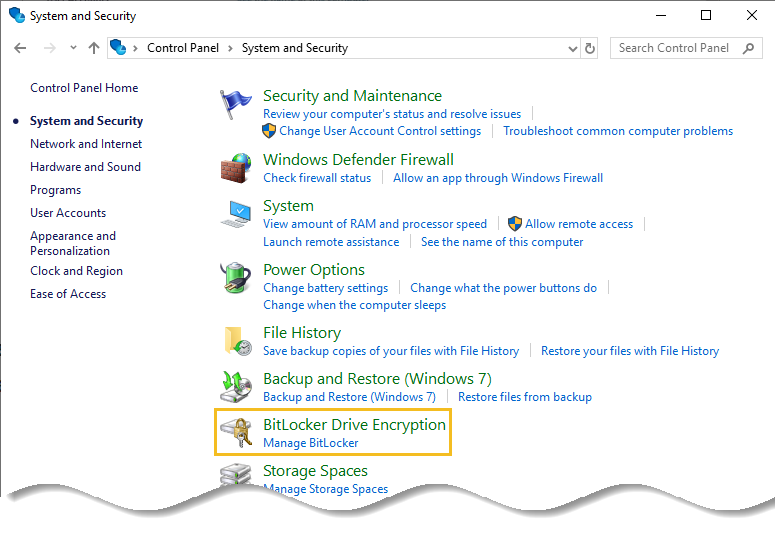
Step 3: Under BitLocker To Go, expand the drive you want to encrypt (H drive) and click the Turn on BitLocker link.
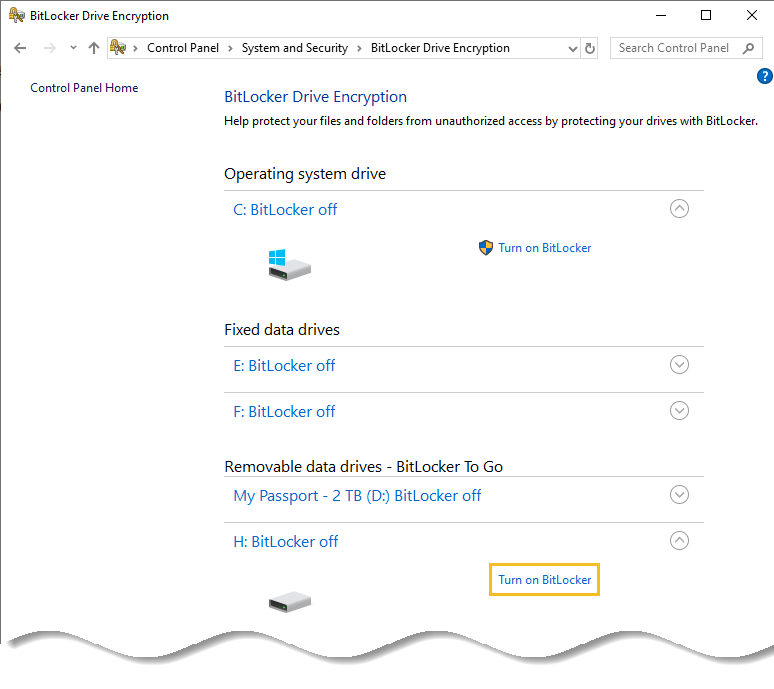
Step 4: It takes few seconds to initiate your drive. Once this process is over, click on Use a password to unlock the drive option, and create a password to unlock the drive. Click Next to continue.
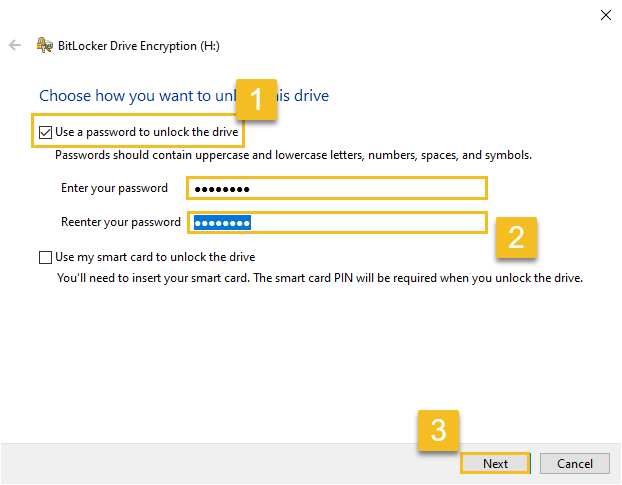
Step 5: You will be given three choices to save a recovery key to regain access to your files in case you forget your password. We are recommending select Save to your Microsoft account option. Click Next.

Step 6: Choose the encryption option as Encrypt used disk space only (faster and best for new PCs and drives). Click Next.

Step 7: In this step it is recommended that you select the Compatible mode, as it will ensure you can unlock the drive if you move it to another computer running a previous version of the Windows such as Windows 7 or Windows 8.
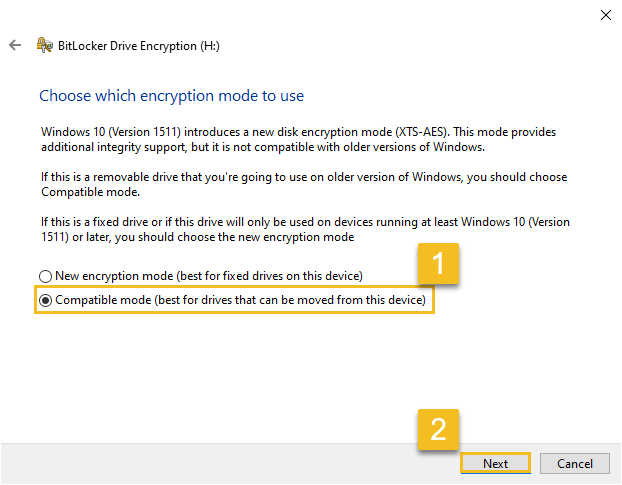
Step 8: Click Start encrypting to being the process.

Step 9: It can take few minutes to encrypt your drive.

Step 10: Click on Close button to finish the encryption.
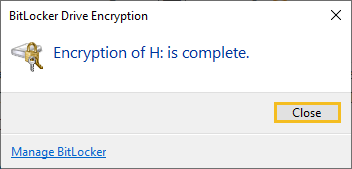
When encrypting USB flash drive or external hard drive try to start with an empty removable media, as it will speed up the process, then new data will encrypt automatically.






























Add comment